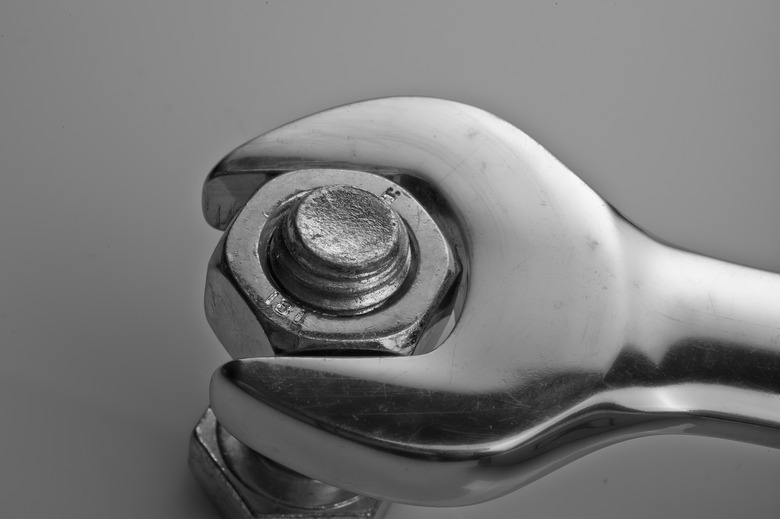How To Calculate Torsion Constant
The torsional constant is a physical property of a material. It is most commonly used to describe metal beams and is denoted by the variable "J." When a torque is applied to a metal beam, it will twist a certain angle. The angle that the beam twists depends on the beam's rigidity, length and torsional constant. The torsional constant of a beam depends on not only the beam material, but also the beam shape.
Step 1
Multiply the torque applied to the beam by the length of the beam. Ensure that the length of the beam is in meters.
Step 2
Divide the value from Step One by the angle of twist of the beam. Ensure that the angle is in radians. If the angle is in degrees, divide the value by 360 and multiply it by 2 * pi to convert it to radians.
Step 3
Divide the value from Step Two by the the shear modulus of the material. A table of shear modulus values for common materials is provided in the resources section. The resulting value is the torsion constant. The unit of the value is in meters^4.
Cite This Article
MLA
Medda, Suman. "How To Calculate Torsion Constant" sciencing.com, https://www.sciencing.com/calculate-torsion-constant-8630424/. 13 March 2018.
APA
Medda, Suman. (2018, March 13). How To Calculate Torsion Constant. sciencing.com. Retrieved from https://www.sciencing.com/calculate-torsion-constant-8630424/
Chicago
Medda, Suman. How To Calculate Torsion Constant last modified March 24, 2022. https://www.sciencing.com/calculate-torsion-constant-8630424/
